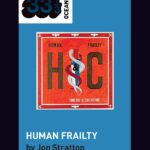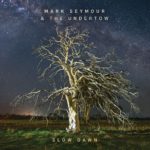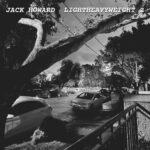Hunters & Collectors, ‘Human Frailty’
A review of Human Frailty as part of Rolling Stone Australia magazine’s top 200 greatest Australian albums of all time.
Author: Mahmood Fazal, Rolling Stone.
Date: 6 December 2021.
Original URL: https://au.rollingstone.com/rolling-stones-200-greatest-australian-albums-of-all-time/page/7/hunters-collectors-human-frailty/
Article Text
Hunters & Collectors, ‘Human Frailty’
White Label Records 1986
“The whole album was about a girl I was in love with,” quips Hunters & Collectors frontman, Mark Seymour to SBS. “There was just a lot of things going on. I just had a lot of raw material.”
Human Frailty is a live-wire album that levelled the post-punk playing field in the Eighties. The seven-piece outfit drifted deeper into suburban Australia and untied a working class psych; where hard yakka Westies, half pissed and shirtless in mangy pubs, their mullets soaked in grease and sweat, would growl at the top of their lungs, “You don’t make me feel like I’m a woman anymore.”
For the first time, the desperate and sensitive side of the larrikin archetype blossomed with raw thundering riffs, impassioned lyrics, French horns, and cold-steel percussion from found-objects. “We may never meet again, so shed your skin and let’s get started,” cries Seymour on “Throw Your Arms Around Me”.
The record allowed Seymour to figure himself out and let loose the bottled up bloke he was expected to be. It entwined the masculine with the feminine. Top shelf culture was turned up for the proletariat. Their logo was printed on beer coasters for local RSL’s. They cut their teeth at the infamous Crystal Ballroom. On “Relief”, the orchestra was arranged against the New Wave.
On “Is There Anybody in There?”, punk rattled in a mixer with white funk. Although Seymour initiated the songs, they took pride in calling themselves the Autonomous Workers Collective and never had a hierarchy. The band wanted to write pop songs.
The final sound is a lament for down under’s suburban underside, a reminder that the majority of the population don’t live in the cities. These songs are a cry for the quiet masses, a united sense of suburban failures and suburban triumphs.
Seymour’s haunting is timeless, “Well, I was lookin’ out the window / There’s nothing there to see / I needed inspiration / So I turned on the TV / Is there anybody in there?” As the album winds down, we’re left with one of the greatest moments of the record in “This Morning”.
The lyrics detail the story of a woman leaving, while illustrating, with agonising simplicity, the bare bones of a man who is afraid of being alone. Its desperate, needy, childish ego is juxtaposed with an intricate webbing from the horn section. “Full of fear and trembling for her / Her last words to go away / But blind faith’s trying to tell me it isn’t over,” groans Seymour.
The songs were to colour in the missing bits lost in the transition from love to love lost. Hunters & Collectors were an esteemed live act, performing theatrical happenings, that begged to be seen and believed.
The caricature of an unarmoured brute lives on in Human Frailty, and the way we think of the bloke next door is richer for it. It’s our kind of romance; with horns, performative masculinity, and industrial drums. A portrait that offers the contemporary image of manhood some air and light.
Comments
N/A.





